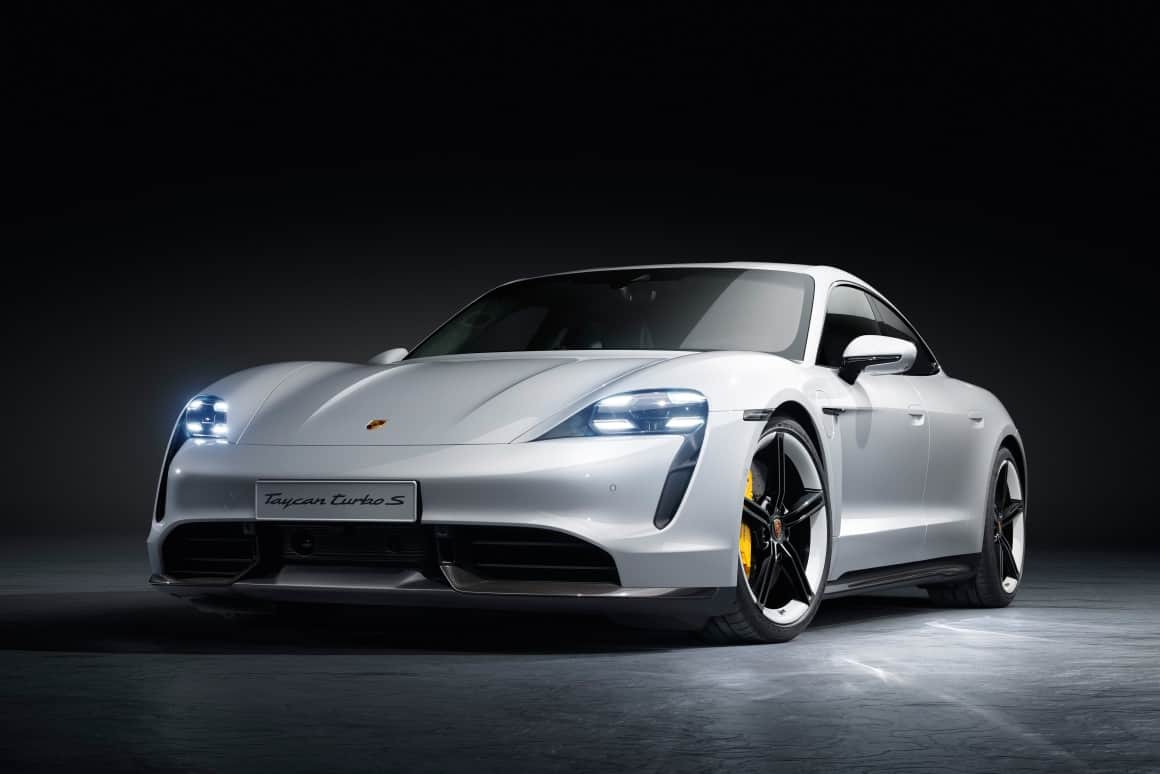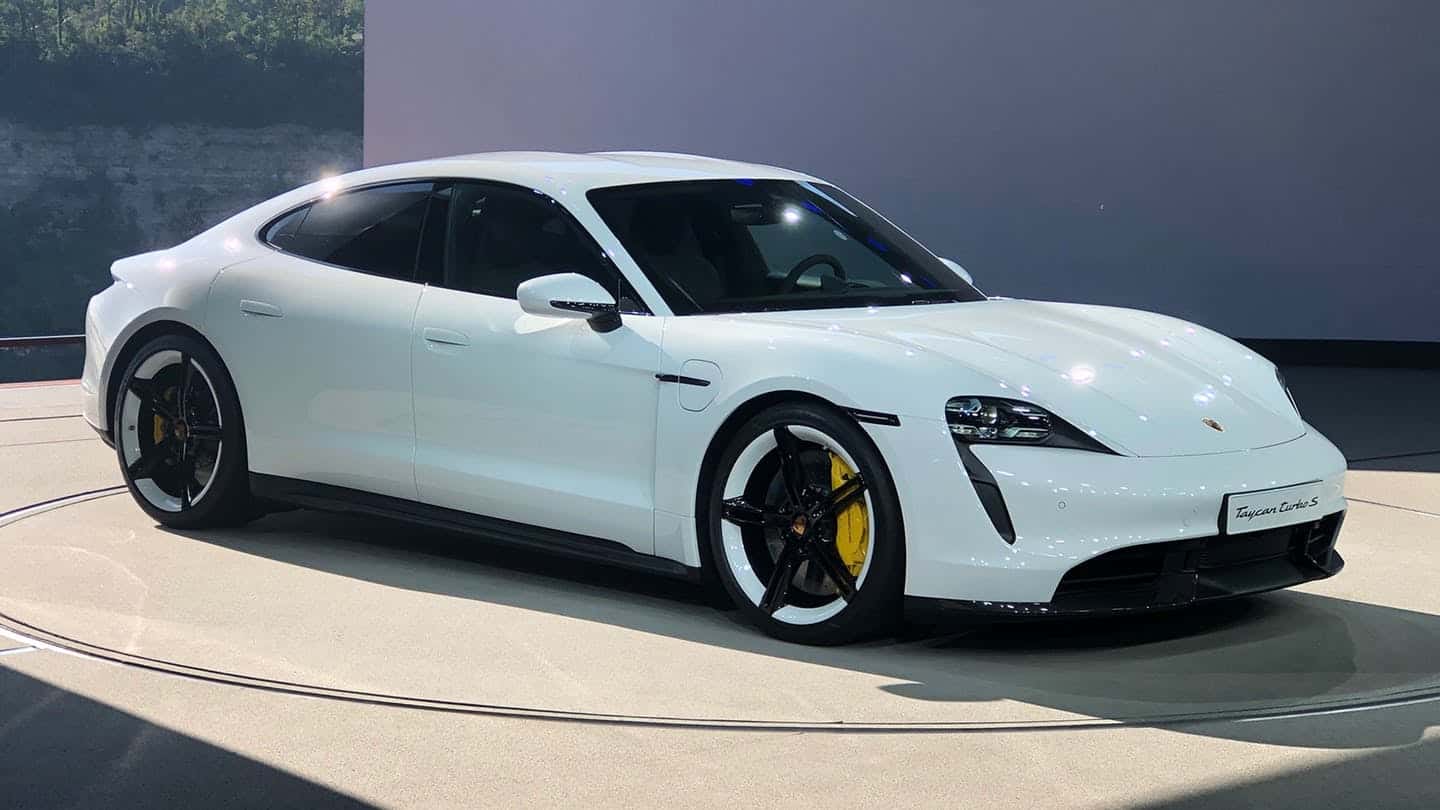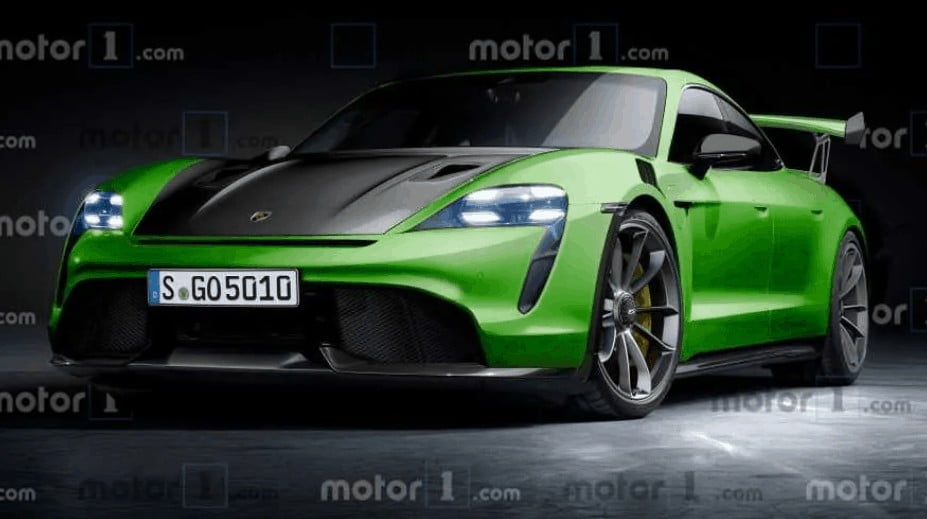4th September 2019 Stuttgart Germany

Here we go again – Porsche have launched an electric car – Porsche Tayan Turbo and the price here in Australia – $150,900 for the base Turbo to $272,000 for the S model
So how much are you paying for the “Soul of a Porsche”? Plenty and you know what? There are people out there who will pay the premium
Tesla?
A Tesla S Performance with all options ticks out at around $184,136 drive away. This electrified Porsche will be circa $286,300 and that’s an awful amount of premium to pay for a Porsche badge.
Jealous – Absolutely towards those who will or can afford to pay nearly $300k for an EV. Would I if I could? No bloody way.
But you’ve got to hand it to the Germans, and particularly Porsche Germans. They’ve always been able to ask premium prices for the brand and get the sales results.
And for the worldwide launch, we have former F1 driver Mark Weber, and Porsche Ambassador, spruiking on YouTube. If you’d like to watch the whole launch or at least 40 odd minutes of it, click on the link below
And here’s today’s story from The Australian by one of the journalists who were lucky enough to get an invite.
Read and Enjoy
You can now buy Porsche’s Tesla killer, the Taycan
Hannah Elliott
After four years of hype, Porsche has debuted the Taycan electric car.
The four-door sedan is the first all-electric vehicle from the Stuttgart, Germany-based car maker. (Although its founder, Ferdinand Porsche, built hybrid-electric “electromobile” cars under his own name as early as 1900.) The first models in the new series are the $US185,000 ($272,200), 750-horsepower (552 Kw) Taycan Turbo S and $US150,900, 670-horsepower Taycan Turbo.
The 2020 Porsche Taycan represents the biggest investment Porsche has ever made in a new model. Porsche
The range was announced as 450km, or 279 miles, which is less than that of the latest Tesla Model S. Less powerful – and probably less expensive – variants of the all-wheel-drive cars will follow later this year: The first big derivative, called the Taycan Cross Turismo, will arrive at the end of next year.
“We know we need to continue evolving because the world around us is evolving,” said Klaus Zellmer, head of Porsche North America, at the debut on September 4 in Niagara Falls, Canada. “In the automotive industry, we will see more change in the next five years than we have seen in the past 50.”
Roughly 200 journalists and other invited guests gathered at the site-known for hydroelectric power-for the unveiling Wednesday morning, which occurred simultaneously with mirror events at a solar farm near Berlin and a wind farm near Shanghai. “The future is electric, whether you want it or not,” Zellmer said.
The 2020 Porsche Taycan represents the biggest investment Porsche has ever made in a new model, Zellmer said, incorporating funds from $US6.6 billion the company has devoted to making electric vehicles at a new factory in Stuttgart. It benefits from the additional $US2 billion that parent group Volkswagen spent to erect the Electrify American program, a VW subsidiary that owns and maintains a national network to charge electric vehicles. Roughly $US800 million of that sum will be used to build an electric network in California alone.
It also spells the birth of an entire third appendage to the Porsche portfolio, adding battery-electric vehicles (BEVs) to the existing roster of combustion engine and hybrid-motored vehicles, like the Cayman, Macan, Panamera, and 911. After the Taycan Cross Turismo electric car, there will be a fully electric Macan, Zellmer said: “By 2025, more than 50 per cent of all Porsche vehicles sold worldwide will have a plug.”
Same, but different
The 2020 Porsche Taycan looks much like the Mission E Concept that debuted at the Frankfurt Motor Show in 2015, with some notable changes. It has lost the suicide doors, futuristic disc wheels, and rear definition that the concept had, mainly due to safety regulations and concerns, said Chad Bass, Porsche’s manager of E Performance. With seating for four and a boot big enough to hold two large golf bags, the current iteration looks most similar to the $US86,300 Panamera sedan.
It has two electric motors, one at the front axle and one at the rear axle, that allow the Taycan Turbo S to go from zero to 60mp/h (96.6km/h) in 2.6 seconds, while the Taycan Turbo can do it in three seconds. Both times equal, but do not beat, times posted by Tesla’s Model S. Top speed for both is 161mp/h.
But don’t let the “Turbo” name fool you. The Taycan is not turbocharged. Porsche is using the term “Turbo” for branding only since an actual turbocharger is a device driven by an engine’s exhaust gas that forces compressed air into a combustion chamber to enhance efficiencies in internal combustion engines – not in electric motors.
“For Porsche, the Turbo name represents a brand, the top tier of our performance vehicles,” Calvin Kim, a Porsche spokesman, said in an email.
“As the new Taycan Turbo and Turbo S represent the top tier of the Taycan family celebrating its world premiere today, we believe it deserves the title.”

Um @Porsche, this word Turbo does not mean what you think it does
Under the hood and chassis, Taycan packs an adaptive air suspension, rear-wheel steering, and four drive modes. Those include “Normal”, “Sport”, “Sport Plus” and “Range”. An individual system can also be configured according to preferences. Unlike other electric cars that operate in one gear, the Taycan has a two-speed transmission, allowing it to accelerate quicker rate and then, in second gear, maintain efficiency and power while travelling at high speeds than would a typical single-gear configuration.
The Taycan will also be the world’s first production vehicle with a system voltage that can charge with 800 volts instead of the commonly used 400 volts for electric cars. That means that under ideal conditions (not fast driving, not running the A/C), the charging time to get from five to 80 per cent of a charge will be 22.5 minutes.
The charging time to get from five to 80 per cent of a charge will be 22.5 minutes.
The special 800-watt chargers are part of Porsche’s plan to afford easy charging to all Taycan owners. Each Porsche dealership and experience centre will offer quick-charge stations, and each Taycan owner will receive three years free charging on the Electrify America network.
Inside, most of the conventional buttons and knobs found in previous Porsches have disappeared in favour of an almost totally touch-controlled dashboard and centre console. The main instrument cluster is a curved 16.8-inch screen with a small touch-control field at the edges to alter light and chassis functions.
Drivers can choose between four display modes for the configurable cluster including “Classic”, which is reminiscent of traditional Porsche gauges (minutes the tachometer), and “Pure” mode, which simply displays essential information like speed and route guidance.
There’s also a 10.9-inch infotainment system with a customisable home screen and an angled 8.4-inch touch panel with handwriting recognition to control things like the climate inside the cabin. The Porsche Taycan will be the first car ever to come with Apple Music built directly into the car’s entertainment system.
In the rear of the cabin, a 5.9-inch touch control panel directs climate and audio zones. Interior trimming materials made sustainably from recycled polyester fibres and floor coverings and from old fishing nets are available.
The first of many electrics
At a private event the evening before the debut in Canada, Zellmer showed a film comparing the introduction of electric technology into the Porsche line to when it first introduced turbocharging to its endurance racing cars like the 917 and then the 930 production car. Electrification of the Porsche line is a calculated risk, an announcer said over the PA, but the company thrives on the challenge.
“Taycan is a turning point for Porsche and the entire automotive industry as it raises the technical bar for EVs beyond Tesla,” said Michael Dean, a senior automotive analyst for Bloomberg Intelligence, in his latest report on the company.
Porsche is using the Taycan to break into the all-electric segment slightly differently than did competitors like Audi and Jaguar, who chose to attack Tesla’s dominance with their own all-electric SUVs, the e-Tron and i-Pace, respectively. Porsche, on the other hand, opted to jump into the all-electric market in the form of a four-door sedan. (It debuted the 918 hybrid supercar in 2013 and Cayenne hybrid SUV in 2014, but Taycan is the first modern Porsche vehicle that is all-electric.)
“The Taycan should achieve a rare feat for a first-generation BEV and be profitable from launch given Porsche’s proven pricing power, albeit at vastly reduced margins as compared with gas-powered models, in our view,” Dean said.
Reportedly all 10,000 of the Taycan units allocated to North America have sold out, and a further 10,000 to 20,000 are slated for the rest of the world. None of those has been allotted to the Porsche car-sharing program, Porsche Password.
Perhaps the biggest question regarding the triumph of the new vehicle is how it compares with its closest competitor, the Tesla Model S. The pre-eminent electric sedan and with a price range from $US79,990 to well over $US100,000, Model S has set the bar in modern times as the first and best option for a luxury-level electric sedan. It has a total equivalent of from 417- up to 762 horsepower and an all-electric range of up to 370 miles. The Taycan’s pricing, however, will start in a higher category than that of the Teslas: $US185,000 for the Taycan Turbo S and $US150,900 Taycan Turbo.
Zellmer said 50 per cent of the people who have reserved a Taycan are new to the brand altogether, and the biggest conquest is from Tesla owners. The biggest switch from the other half of the Taycan reservers is those who own the 911.
Porsche brass has downplayed the likelihood that Taycan would cannibalise sales of the Panamera sedan, which accounted for less than 10 per cent of all the brand’s sales globally last year. (By contrast, the Cayenne and Macan SUVs comprise more than 60 per cent of all Porsche sales.) Since the Taycan offers blinding speed and the aura of the new fancy thing, consumers may wonder why they should buy the more ubiquitous Panamera at all, especially in the hybrid versions.
“People will want combustion-engine cars for a long time,” Bass said, adding that he did not foresee the Taycan taking a big chunk of Panamera sales.
The debut came a week after Porsche announced it had set a record-breaking lap of 7 minutes 42 seconds for a four-door electric vehicle at the Nurburgring race track in Germany. The Tesla Model S has not publicly attempted that record.
Deliveries of the Porsche Taycan to the United States will begin in early 2020.
This story is from Bloomberg. Prices and availability in Australia may differ.
Shopping around for a new car. Car Business does Any new Car Cheaper than you can on your own


